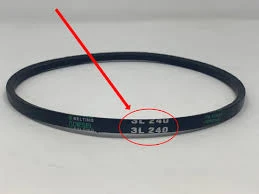- Arabic
- French
- Russian
- Spanish
- Portuguese
- Turkish
- Armenian
- English
- Albanian
- Amharic
- Azerbaijani
- Basque
- Belarusian
- Bengali
- Bosnian
- Bulgarian
- Catalan
- Cebuano
- Corsican
- Croatian
- Czech
- Danish
- Dutch
- Afrikaans
- Esperanto
- Estonian
- Finnish
- Frisian
- Galician
- Georgian
- German
- Greek
- Gujarati
- Haitian Creole
- hausa
- hawaiian
- Hebrew
- Hindi
- Miao
- Hungarian
- Icelandic
- igbo
- Indonesian
- irish
- Italian
- Japanese
- Javanese
- Kannada
- kazakh
- Khmer
- Rwandese
- Korean
- Kurdish
- Kyrgyz
- Lao
- Latin
- Latvian
- Lithuanian
- Luxembourgish
- Macedonian
- Malgashi
- Malay
- Malayalam
- Maltese
- Maori
- Marathi
- Mongolian
- Myanmar
- Nepali
- Norwegian
- Norwegian
- Occitan
- Pashto
- Persian
- Polish
- Punjabi
- Romanian
- Samoan
- Scottish Gaelic
- Serbian
- Sesotho
- Shona
- Sindhi
- Sinhala
- Slovak
- Slovenian
- Somali
- Sundanese
- Swahili
- Swedish
- Tagalog
- Tajik
- Tamil
- Tatar
- Telugu
- Thai
- Turkmen
- Ukrainian
- Urdu
- Uighur
- Uzbek
- Vietnamese
- Welsh
- Bantu
- Yiddish
- Yoruba
- Zulu
Nov . 27, 2024 19:14 Back to list
Understanding the Benefits and Applications of V-Ribbed Belts in Modern Engines
Understanding Belt V-Ribbed Importance and Applications
Belt v-ribbed, more commonly known as a serpentine belt or ribbed belt, plays a crucial role in the functioning of both automotive and industrial machinery. Recognized for its distinct design, this type of belt features multiple ribs that run parallel to its length and are shaped in a V-pattern. This innovative design not only enhances grip and friction but also allows the belt to transmit power efficiently across interconnected pulleys.
The Design and Functionality
The primary advantage of the v-ribbed belt lies in its ability to provide considerable surface area contact with the pulleys it operates with. Unlike traditional flat belts, the ribs grip the sides of the pulleys, reducing slippage and improving power transmission. This is particularly important in automotive engines, where the serpentine belt connects various components such as the alternator, power steering pump, water pump, and air conditioning compressor.
Understanding Belt V-Ribbed Importance and Applications
Applications in Automotive Engines
belt v-ribbed

In modern vehicles, the v-ribbed belt has become an indispensable part of the engine system. Typically made from durable materials such as rubber compounded with reinforcing cords, these belts can withstand the high temperatures and stresses common in engine environments. Over time, however, wear and stress can lead to cracks or fraying. Regular inspections and timely replacements of the serpentine belt are crucial to prevent costly engine damage and maintain vehicle performance.
Automakers have adopted the v-ribbed design for good reason. It allows for ease of installation and maintenance, as many designs are constructed to be automatic tensioned. This means that the tension on the belt is automatically adjusted, reducing the need for frequent manual adjustments that can lead to premature failure. This feature greatly enhances the reliability of the belt and the systems depending on it.
Industrial Uses of V-Ribbed Belts
Beyond automotive applications, v-ribbed belts are used extensively in various industrial settings. They power everything from conveyors to agricultural equipment and manufacturing machines. The reliability and efficiency of these belts make them favored for tasks requiring sustained power transmission under varying loads. Their ability to maintain performance in changing conditions—such as temperature fluctuations and varying operational speeds—also makes them attractive options for industrial applications.
Conclusion
In summary, the v-ribbed belt stands out as a pivotal component in both automotive and industrial machinery. Its thoughtful design maximizes contact with pulleys while minimizing slippage and wear. This makes it not only effective in transmitting power but also a crucial element for maintaining the efficiency and longevity of a variety of systems. As technology continues to evolve, the design and materials used in v-ribbed belts are also expected to advance, promising even greater reliability and performance in the future. For anyone involved in vehicle maintenance or industrial machinery operation, understanding the importance of v-ribbed belts can lead to more informed decisions and practices, ultimately resulting in better maintenance and enhanced productivity.
-
Upgrade Power Steering Pump Belt for Smooth, Quiet Operation
NewsAug.27,2025
-
Precision Timing Belt & Chain: Engine Performance & Durability
NewsAug.26,2025
-
Precision Lathe Drive Belts: Durable & Reliable Performance
NewsAug.25,2025
-
84.5 Serpentine Belt: Durable & Precision Fit for Your Engine
NewsAug.24,2025
-
Premium Ribbed Drive Belts for Quiet Power Transmission
NewsAug.23,2025
-
High-Performance Vehicle Timing Belt for Engine Precision
NewsAug.22,2025

